Stocks & Equities
Evidence Mounts
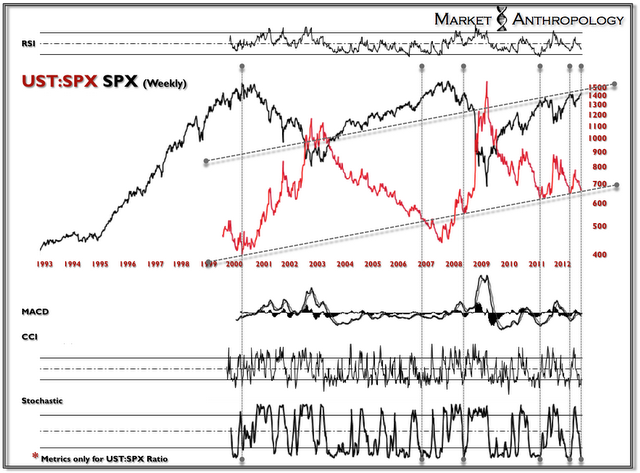

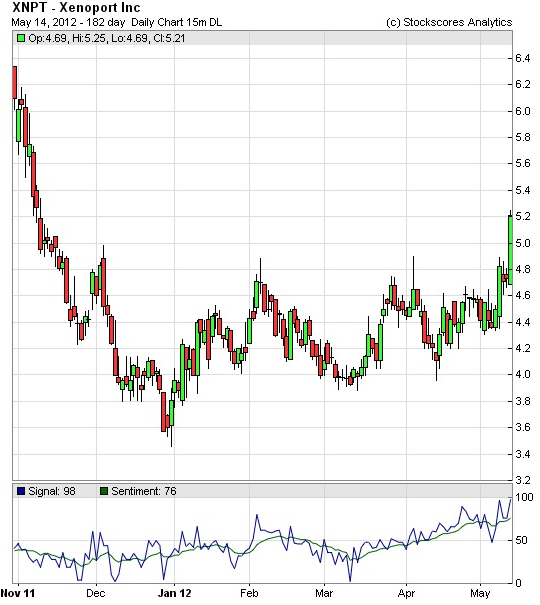

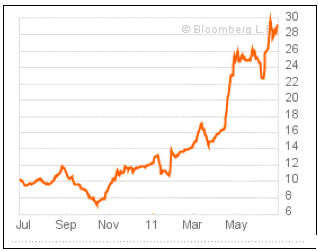
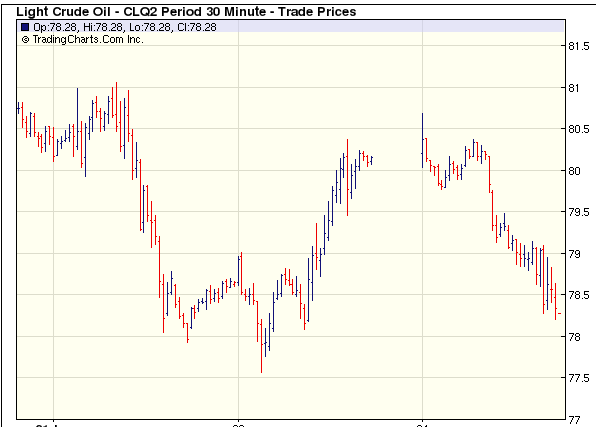
“This time we are in such deep trouble. This time the results are going to be dramatically worse than 1929. In 1929 America was not $16 trillion in debt, facing $100 trillion in unfunded liabilities, over $360,000 in debt per citizen. In 1929, most states were not bankrupt, insolvent and dependent on federal government handouts to survive. One county owes over $108 billion in debt , the biggest part of it in unfunded government employee pensions. Today, 77,000 federal employees earn more than the governors of their states“. The American Petroleum Institute reports that demand for oil in July was at the lowest level since 1995.
Why we are on the brink of the greatest
Depression of all time
Everywhere from FoxNews.com to CNBC.com, I suddenly see commentators warning of pending doom, economic collapse, and a new Great Depression. Welcome to my club. Perhaps America’s politicians and economists should have paid attention to an entrepreneur and small businessman that has been warning of economic collapse and a new Great Depression publicly for over two years.
More importantly, none of the current commentaries mention the “why’s” of this slow motion economic collapse…beyond the obvious — mountains of deficit and debt. None of them mention the dysfunctional structure of the current U.S. economy and the massive changes in the work ethic and mindset of the average American.
I am a successful small businessman and a patriot who loves America and always sees its greatness. I am also an optimistic, positive thinker who always sees the glass half full.
But not this time.
This time we are in such deep trouble, the only solution is a radical restructuring of the politicians, the economy, and the way we view personal responsibility versus government handouts. If those changes don’t come then we are facing a long decline and the eventual end of America.
This time the results are going to be dramatically worse than 1929. This time we are facing The Greatest Depression ever.
Why? Because The Great Depression had NONE of the structural, economic, and social problems, nor the massive obligations we are now facing. Read the facts:
In 1929 America was not $16 trillion in debt, plus facing over $100 trillion in unfunded liabilities. That’s over $360,000 in debt per citizen.
In 1929, most of our states were not bankrupt, insolvent and dependent on federal government handouts to survive. One county (Cook County which includes Chicago, Illinois) now owes over $108 billion in debt (the biggest part of it in unfunded government employee pensions).
In 1929, we did not have 21 million government employees with bloated salaries, obscene pensions, and free health care for life. Today 1 out of 5 federal employees earn over $100,000.
Today, 77,000 federal employees earn more than the governors of their states.
Staggering numbers of federal government employees retire at a young age with $100,000 pensions for life.
Unfortunately on the state and local levels it’s even worse. There is now nearly $4 trillion in unfunded pension liabilities for state government employees.
Protected by their unions and the politicians they elect, government employees are bankrupting America. In Illinois there are retired government employees making over $425,000 per year.
No one could have imagined any of this in 1929. There is no possible way to pay these bills moving forward.
In 1929, Social Security, Medicare, and Medicaid didn’t exist. The federal government had no such obligations threatening to consume the entire federal budget within a few years.
In 1929, there was no such thing as welfare, food stamps, aid to dependent children, or English as a second language programs. American’s didn’t consider it the responsibility of government to pay for breakfast and lunch for school students — let alone for illegal immigrants at school.
Who could have imagined back in 1929 that one seventh of America’s population would be on food stamps…and the federal government would ADVERTISE to encourage even more Americans to sign up for food stamps and welfare.
Who could imagine back then that the federal government would team up with the President of Mexico to encourage Mexicans living illegally in America to sign up for food stamps?
Who could have imagined back then that the president would offer not just welfare, but waivers to allow any state to opt out of requiring work to receive welfare?
Back in 1929, who could have imagined 86 pregnant teenage girls all in one Memphis high school?
In 1929 we had families, moral codes, and churches to prevent this kind of tragedy. Do you actually believe this is just one abnormal high school? There must be record numbers of pregnant teens all over America. They have figured out that the choice is to either work a drab, depressing job paying minimum wage, or pump out babies and have government pay your bills for decades to come. But where will the money come from? This will overwhelm the system with generations of massive debt. This is a nightmare.
In 1929, legal immigrants wanted only to work. My grandparents, who came to this country from Russia and Germany, received no government benefits. They worked day and night to provide for their family and become American citizens. It was sink or swim. My grandmother Anna Root never took a penny in welfare, even when my grandfather died and left her with no job, no money, and 7 young children. So back in 1929 immigrants cost us very little.
Today we have millions of illegal immigrants and their children collecting billions of dollars in entitlements from U.S. taxpayers.
In one state (California) illegal aliens cost taxpayers over $10.5 billion annually just for education, health care and incarceration. Do you now understand why California is bankrupt and insolvent? This is spreading across the country.
More dysfunction? Today new studies show that almost 20% of American children under age 18 are obese and therefore prone to suffer pre-diabetes, diabetes, or cardiovascular disease.
Even worse, by 2020 experts predict that 52% of the adult population of America will have either pre-diabetes or diabetes.
Do you understand the cost of diabetes? This alone will overwhelm and bankrupt America’s health care system.
In 1929 we had no federal disability program. Today almost 11 million Americans are on disability. There are more citizens on the disabled rolls than the population of 39 of our 50 states. This is far worse than the welfare or unemployment rolls- which have time limits. Disability is forever. The ratio of able-bodied workers to disabled in 1967 was 41 to 1. As of June 2012 it is now 16 to 1. It is impossible to pay this bill long term.
But wait…it gets worse. Now soldiers are in on the act. Are you aware 45% of returning vets are claiming “disability” — a number that dwarfs all prior records in the history of warfare. No nation can afford this.
In 1929, we had an education system that was the envy of the world. Today our public schools are in shambles. We spend the most money in the world, and get among the worst results. The difference today? Teachers unions are in charge, instead of parents. Our students graduate with few skills, are qualified only for low paying manufacturing jobs that no longer exist — they’ve been shipped to China and India. What will this workforce do for the rest of their lives? Live off the government dole? Who will pay for it?
In 1929 taxes were much lower. Forget the tax rates — they were meaningless. In those days we had a cash economy, so most businesses paid little or no taxes. Sales and FICA taxes didn’t exist. Today the combined local, state, property, gas, sales, FICA and federal taxes are the highest burden in history.
Unconvinced?
When income taxes started in 1913, the average American was untouched. Only the richest 350,000 Americans paid a 2% income tax. Today the average American works until April 12th just to pay his or her taxes.
This stifles entrepreneurship and hinders the financial risk-taking necessary to create jobs and get out of a Great Depression.
New numbers just out for July back up my contention that disaster looms. Sales tax revenues plunged an alarming $539 million below expectations in California last month. The jobless rate rose in July in 9 out of 10 battleground states — Iowa, Florida, Michigan, Nevada, New Hampshire, Pennsylvania, Virginia, Colorado and North Carolina all had higher unemployment (while Ohio held steady). They say bad news comes in threes. Well here’s the worst news of all- the American Petroleum Institute reports that demand for oil in July was at the lowest level since 1995. These figures are alarming — to say the least.
Do you get the picture? Our country is staring at the Greatest Depression ever. We face a long slow decline towards the end of America — unless we change paths and policy quickly.
The economy is crumbling. The situation is turning more hopeless by the hour. The more government gets involved, the worse it gets. Coincidence?
The solution is actually simple: dramatically cut the size, scope and power of government; cut spending; cut entitlements; cut taxes; cut government rules and regulations that smother, damage and destroy businesses, prevent startups, and kill jobs; reform Social Security, Medicare and Medicaid; reform public employee pensions; stop the wars (we can no longer afford to police the world); end or reform the Fed; end bailouts and stimulus (ask Japan about the failures of repeated stimulus); end the Democratic obsession with green energy and high speed rail (ask Spain about the waste in those two programs); encourage oil and energy exploration; encourage job creation by small business and the private sector; term limit politicians; institute school choice; and back the dollar with a gold standard.
Or, like so many other great empires of history, America may never recover from this Greatest Depression of All Time.
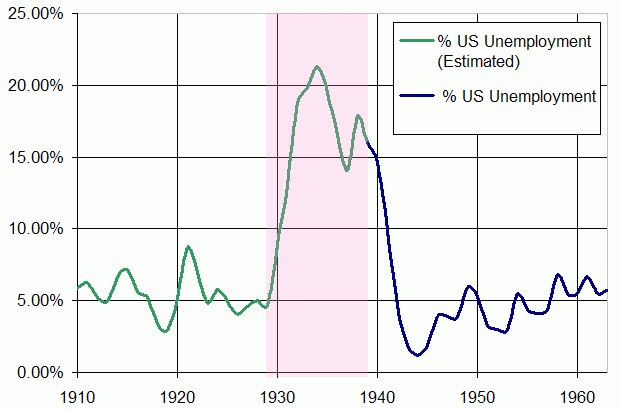
Wayne Allyn Root is a capitalist evangelist and serial entrepreneur. He is a former Libertarian vice presidential nominee. He now serves as chairman of the Libertarian National Campaign Committee. He is the best-selling author of “The Conscience of a Libertarian: Empowering the Citizen Revolution with God, Guns, Gold & Tax Cuts. ” For more, visit his website:www.ROOTforAmerica.com
” For more, visit his website:www.ROOTforAmerica.com .
.
Some of you will appreciate this column about the five secrets of investor happiness; many of you won’t.
I don’t care.
And with those three words, you have the first secret of investor happiness.
“Happy investor” is not an oxymoron. Contented investors don’t care what anyone else thinks, except perhaps as motivation to do the opposite. Have a sense of where you are and a plan to get to where you want to go, and don’t let ego block the path.
“The pursuit of money is not going to take you to happiness,” said James Altucher, a stock trader and financial commentator. His pugilistic Altucher Confidential blog — part gonzo, part Gandhi — deals with psychology, human nature, and the uses and abuses of money.
“You have to be happy first,” Altucher added, “or at least know what will make you happy and have a good grounding in yourself before you can go out there and invest successfully.”
Being up front about your needs and wants leads to greater contentment. Too often we get into a people-pleasing role, worrying about another person’s opinion of us or being afraid that we’ll offend them — even if we’re paying for their advice or services. That may work as a primal survival tactic, but it’s not so great for an enriched, fulfilled modern life, let alone a rich investment portfolio.
Said Altucher: “The fewer barriers you put between yourself and happiness, the more likely you will be a successful investor.”
Secret #1: Don’t worry about what others think
It’s relatively easy to ignore the barrage of bright faces on television telling you what to think, how to look and who to fear. Just unplug the set.
It’s far more difficult to ignore what others think — about you. If you’re considered a smart investor, you won’t easily own up to mistakes. Being competitive with your rich brother-in-law may propel you to risks you shouldn’t take. Going against the herd is tough to stomach if your out-of-favor stocks stay that way for a long time.
We all want to be listened to and respected, to get positive feedback and warm, fuzzy strokes. Such external gratification feels great — but it’s addictive; you’re left wanting more and more.
Focus on internal gratification — you control the volume of your inner voice. Let go of your ego, or at least dial it down.
Said Altucher: “If I’m convinced I’m right about a trade, that’s ego. If I think the market’s insane and the stock should go up, that’s ego. You’re insane if you think you can change the tide of the ocean.”
He added: “I have a lot less ego in my investing. I’m not trying to prove anything to anybody. I’m disappointed every day as an investor, but by following my own rules, nothing affects me all that much.”
Secret #2: Be honest
In a famous 2010 Harvard Business Review article, “How Will You Measure Your Life?” , now a book by the same name, Harvard Business School professor Clay Christensen devoted a considerable amount of space on how to live an honest life, or what he called “stay out of jail.”
Christensen wrote: “It’s easier to hold to your principles 100% of the time than it is to hold to them 98% of the time. If you give in to ‘just this once’… you’ll regret where you end up. You’ve got to define for yourself what you stand for and draw the line in a safe place.”
Honesty at work, in our community, with our family — and with our investing — takes far less effort when we’re honest with ourselves about who we are and what we want.
“Honesty has made me more money than any sort of dishonesty would have,” Altucher said. “In the long run, you can only make money by being honest. Honesty has a way of compounding.”
And don’t limit yourself to traditional avenues to financial wealth: Wall Street needs you more than you need it.
“People need to take an honest assessment of what their skills are,” Altucher said. “If you’re smart enough to invest successfully, you’re smart enough to make money another way.”
Secret #3: Don’t have buyer’s remorse
You bought a stock and the trade went against you. Lick your wounds and learn from your mistake.
“When you have a down day, there’s a tendency to think you’re never going to have an up day again,” Altucher said. “You can’t have any excuses. You made the trade, you’re in the trade, you lost money. You have to move on and the next day start fresh.”
Regrets, we’ve all had a few. Regret is a reflection of a hurt ego. Instead of moping, analyze what went wrong and do your homework better the next time.
Secret #4: Advocate for yourself
Money is intertwined with our psychology on the deepest level. If your parents argued about money or didn’t know how to manage their finances, you’ve probably had to give yourself whatever investing confidence and knowledge you have. And armed with that knowledge, perhaps you’ve chosen a financial adviser or broker to manage your investment portfolio.
Nothing wrong with that. The problem comes in trusting the paid experts and subjugating yourself. Speak up about the investing advice you’re given, just as you’d question a doctor or a car mechanic about the procedures they recommend. Reluctance to inquire about how your portfolio is being invested is a good way to become separated from your money. A financial adviser is your peer, not your parent.
“If something’s really important to you, like money, you need to get educated and then you can have a decent conversation,” Altucher said.
Secret #5: Don’t be afraid
“Investing is bad for your health,” Altucher said. “Everybody projects their childhood onto the markets. They bring that anger into the market, and the market will dish out to you whatever you bring into it.”
In the markets, your fear is the other guy’s profit. Don’t put yourself in worst-case situations where you’re worried about going broke, or looking stupid, or losing your job.
“Have a set of rules and discipline you live by so at least you satisfy your discipline,” Altucher said.
Altucher’s own discipline follows two tracks: He tries to stake money on companies with chief executives who have built a business before, and where the stock isn’t overvalued and sales trends are visible and favorable. Then he answers the question: “What do I have to be afraid of with this investment?” Meaning, what can go wrong with the base case?
“When you’re investing, the market puts you in this ‘fight or flight’ syndrome,” Altucher said. “But there’s no reason to be afraid. You constantly have to pull yourself back from this. Even on a down day, you’re still alive.”
Jonathan Burton is the money and investing editor for MarketWatch, overseeing coverage of investment news and strategies. His Life Savings column focuses on money and personal finance matters. Previously he held contributing editor positions at Bloomberg Personal Finance, Mutual Funds and Individual Investor magazines, and was a reporter with the Far Eastern Economic Review and Investor’s Business Daily. He is also the author of two books on investing.
• Get alerts for Jonathan Burton
•Email: jburton@marketwatch.com
• Follow Jonathan Burton on Twitter

PERSPECTIVE
Only a few weeks ago, stock market sentiment figures were at very bearish readings. This was prompted by the prospect of Spain’s insolvency, Euroland splitting up and the worst drought in the US in fifty years.
Not all could be enduring. Crops will soon be harvested and the drought will no longer be in the headlines. Grains will turn down.
In the meantime, often seasonal optimism could run into early September. Spanish yields have declined and industrial commodities (base metals and crude) have rallied as well.
Even most classes of bonds have rallied this week. This could be anticipating a pause in the stock market advance. Investment-grade corps, treasuries and emerging market debt are doing well, but the sub-prime seems to be topping (chart follows).
On money market stuff, the Ted-spread has narrowed significantly since the concerns of late last year. However, in the past two weeks it has had some unusual swings. Perhaps some volatility prior to a change.
An overall blessing has been the decline in the gold/silver ratio. From 59.4 in June it has declined to 54.5. Much of this has been accomplished in a rush since last week. Enough of a rush to drive the daily RSI down to 27. This has been the RSI level that has ended most of the declines over the past decade.
In looking at the ratio from the other direction, Ross’s Silver/Gold Chart is updated and attached. By this measure, the rally in precious metals is close to ending.
Usually our Pivots are sent out earlier on each Thursday, but things looked fascinating yesterday and much of today was spent trading. In order to get this one out a simpler form is being used.
Also noteworthy is that December corn has completed a “Sequential Sell” pattern that suggests an important top is at hand. The rollover would likely take down other hot agricultural commodities (GKX).
Momentum on the GKX reached 82 a couple of weeks ago and that has ended important rallies over the past decade. One of which was with the cyclical high in 2008. That high was 513 on the index, the next important high was 570 in March last year. So far, this year’s high was 533 a couple of weeks ago – with the momentum high. Today’s close was 513.
Crude oil has accomplished an outstanding swing from very oversold to rather overbought. Also yesterday’s ChartWorks noted that a “Sequential 9” had been accomplished. Also the Dollar Index is approaching support at the 81 level. Last week we noted that the Canadian was approaching resistance at 102 on good momentum. It reached 101.6 and it has declined to 100.5. Technically, a test is needed to reverse the trend, but weakness in the fall has been likely.
While we have been hoping the sunshine for orthodox investment would run into early September, the actual seasonals for the stock market suggest caution. Over the past thirty years the S&P has set its August high early in the last week of the month. Remember the rules for after Labor Day – Don’t be overweight equities and don’t wear white shoes.
With the initial discovery of financial troubles the flight to the liquidity of gold could help the price in dollars, but the “flight” could also be to the unique liquidity of US treasury bills, which would firm up the dollar.
WRAP
- The advice through the summer has been to sell into the rallies for most investment sectors. The hit to US bond markets has been a big heads up and the rebound could run for a week or so.
- It seems that another liquidity problem will not be avoided. The process of discovery could begin in the next few weeks.
- In which case, which sector could provide the “safe haven”?
- In the disaster that began in March 2000 banks became the defensive equity group. The long bond rallied from 91.8 in March 2000 to 110 as the crash completed in late 2002.
- In the 2008 Crash, long bonds also enjoyed the “flight to quality” in a bull move from 105 in mid-2007 to 143 at the end of 2008. There was no significant defensive equity sector.
- This time around, there may be no large equity sector that could be defensive. Moreover, the European bond revulsion could worsen and spread to the US bond markets. In which case, the long bond will not become the focus of the next flight to quality. A sound understanding of term risk could prevail.
Representative Sub-Prime Mortgage Bond

The RSI of the Silver/Gold ratio suggests that it is time to start scaling back positions in miners. Optimum gold targets are $1692 & $1720.

SIGNS OF THE TIMES
“Federal Reserve Chairman Bernanke calls it his ‘nightmare scenario’. Republicans are considering including a plank in their party platform calling for a full audit of the central bank.”
– Bloomberg, August 8
Why not?
Health agencies have been calling for full clinical testing of “alternative health remedies” such as homeopathic medicine. The latter could be germane as it prescribes small amounts of some compounds that are toxic. Now we all know that large expansions of credit are ultimately toxic. But in the early days of tax-payer seduction, central bankers touted that they knew just how much to issue to “manage” the economy. They would never be reckless in providing stability. Then every country had to have a central bank and a “national economy” resulting in the longest run of high volatility in history. Sort of a relentlessly forced instability.
Now the Fed is overloaded with “toxic waste”.
Hey, but not to worry! A year after the 2008 Crash, the Financial Stability Board was formed and based in Basel. It is made up of finance ministers and central bankers – all specialists in the arts of homeopathic finance.
Somehow this reminds of the BIS. The website of the Bank for International Settlements states its mission is “to promote international stability”. It was formed in 1930 – a year after the 1929 Crash – and is located in Basel.
“Foreign direct investment in China fell to the lowest level in two years in July.”
– Bloomberg, August 16
“China Mobile Ltd., the world’s biggest phone company by subscribers, fell the most [-5%] in more than year as profit growth cooled to the slowest annual pace in 13 years.”
by:
BOB HOYE, INSTITUTIONAL ADVISORS
E-MAIL bhoye.institutionaladvisors@telus.net
WEBSITE: www.institutionaladvisors.com















